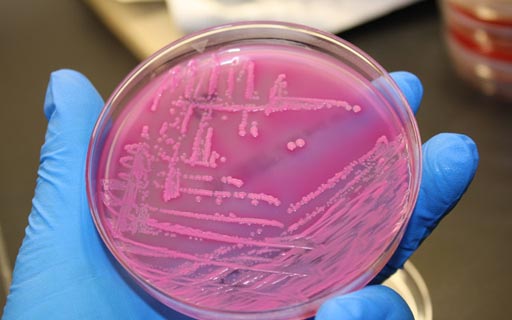Pathogens Help Diagnose Fatty Liver Disease
By LabMedica International staff writers
Posted on 25 May 2017
Nonalcoholic fatty liver disease is a condition characterized by a buildup of fat in the liver and the condition is often not detected until it is well advanced, and a definitive diagnosis requires an invasive biopsy of the liver.Posted on 25 May 2017
The presence of advanced fibrosis in nonalcoholic fatty liver disease (NAFLD) is the most important predictor of liver mortality, but there are limited data on the diagnostic accuracy of gut microbiota-derived signature for predicting the presence of advanced fibrosis.

Image: E. coli (shown here growing on an agar plate) is three-fold more common in advanced NAFLD patients than early stage patients, according to a recent study (Photo courtesy of the University of California San Diego School of Medicine / J. Craig Venter Institute).
Scientists at the University of California-San Diego examined 86 patients with NAFLD diagnosed by biopsy, including 72 with mild or moderate disease and 14 with advanced disease. They characterized the gut microbiome compositions using whole-genome shotgun sequencing of DNA extracted from stool samples.
This process identified 37 species of bacteria that differentiated advanced NAFLD from the mild or moderate stage with 93.6% accuracy. The scientists then validated the finding in a second group of 16 patients with advanced NAFLD and 33 healthy volunteers who acted as controls. This time, they found that by testing the relative abundance of nine species of bacteria, seven of which were in the 37 identified previously, they could differentiate the NAFLD patients from the controls with 88% accuracy.
Karen E. Nelson, PhD, president of the J. Craig Venter Institute and a senior author of the study, said, “We believe our study sets the stage for a potential stool-based test to detect advanced liver fibrosis based simply on microbial patterns, or at least help us minimize the number of patients who have to undergo liver biopsies.” The study was published on May 2, 2017, in the journal Cell Metabolism.




 assay.jpg)









